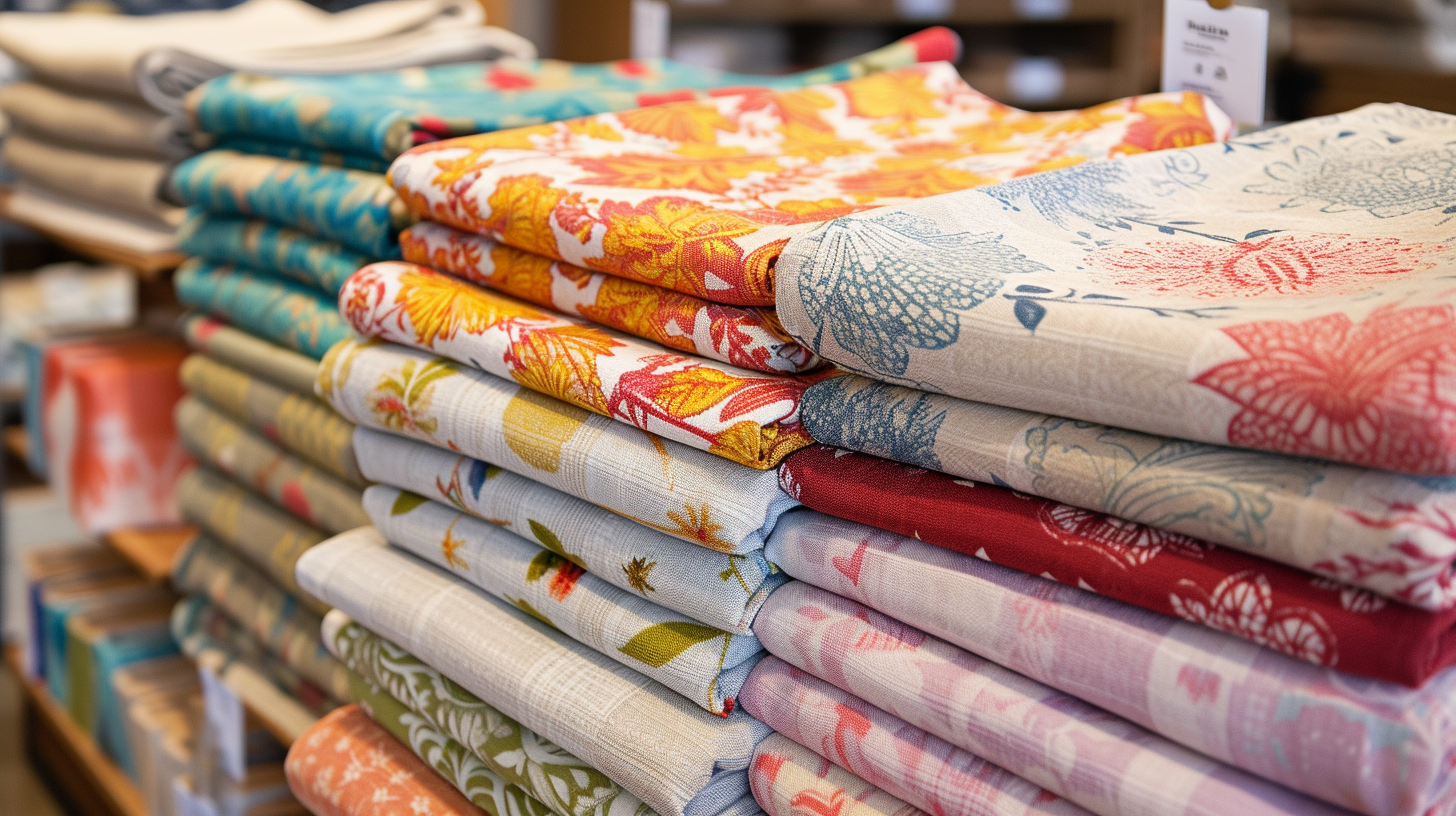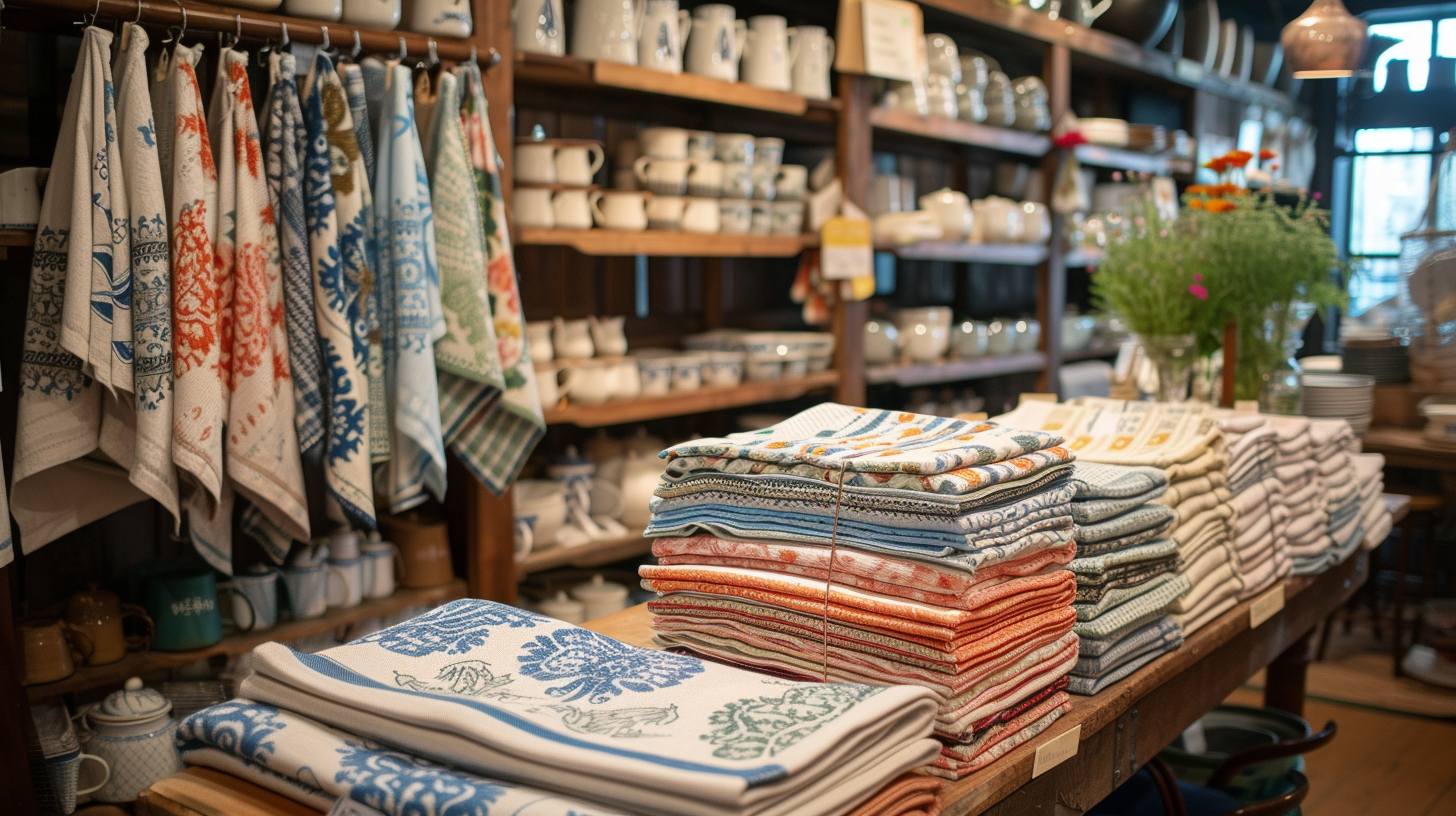continental US only
continental US only
As the tea towel market trends towards sustainability and innovation, understanding this shift and its future trajectory is essential. Set to reach an impressive valuation by 2033, in this research, we provide a succinct exploration of the critical trends, market growth, and what these mean for “the tea towel market trends and future outlook.” Understand and anticipate the dynamic shifts in the market as we move closer to the year 2032.
✔ The global kitchen towel market is expected to reach $28.6 billion by 2033, with a CAGR of 5.7%, due to increasing demand for premium and eco-friendly home care products and evolving urban lifestyles.
✔ Sustainable materials, artistic prints, and functional features are key trends in the tea towel market, with organic cotton and bamboo gaining popularity for their eco-friendly and durable properties.
✔ While the tea towel market grapples with the impact of rising costs for raw materials and environmental concerns, there is a silver lining in the growing consumer inclination towards sustainable products, which is anticipated to drive market value upward.

With a projected growth to reach an impressive $21 billion by 2027, the global market for kitchen towels is flourishing and expected to maintain a strong CAGR of 5.7%, reaching up to $28.6 billion by 2033. This success can be attributed to the rising demand for premium household and personal care products as well as evolving lifestyle needs in urban areas. Those seeking updates on these developments and information regarding the size of this industry should refer to reports specifically dedicated to understanding trends within this segment.
The growing popularity of tea towels both in homes and commercial settings is driven not only by changes within the wider kitchen towel market but also by fluctuations in raw material costs that impact expenses related to acquiring high-quality options.

As the kitchen towel market expands, we're seeing a surge in creative, eco-conscious designs. The changing preferences of consumers towards sustainable products have greatly influenced the trends in tea towel designs. An emphasis on artistic prints and practical features has emerged as a strong preference among shoppers.

The growing demand for eco-friendly goods has led the tea towel industry to incorporate sustainable materials into their production. 100% cotton and bamboo have emerged as popular choices due to their environmentally friendly characteristics. With its durability, reusability, washability, and ecological nature, 100% cotton is a top contender among consumers looking for sustainable household products.
Bamboo is also gaining recognition in the tea towel market thanks to its soft texture and numerous beneficial properties such as being water-efficient, moisture-wicking, antibacterial, and durable. However, the use of recycled waste paper or other similar materials in producing these towels may result in increased costs that can affect customers with varying levels of disposable income.
Consumers seeking to inject personal style into their kitchens are increasingly opting for tea towels adorned with artistic prints and patterns. In the competitive landscape of the tea towel market, manufacturers distinguish themselves by strategically identifying their competitive advantages and areas where they can stand out, such as by introducing innovative features and materials to their products.
With an expected rise in demand for cloth-based kitchen towels and a growing inclination towards innovative designs and patterns, the towel market is poised for substantial growth in the global market.
Tea towels serve a purpose beyond their aesthetic appeal and environmentally-friendly qualities. Their functionality is enhanced through the use of distinct decorative prints, geometric designs, intricate embroidery, and even functional art. These features make them practical tools for various tasks in the kitchen and other settings.
The most common materials used in making quick-drying tea towels are cotton, linen, and microfiber waffle fabric. These fabrics provide absorbency and multi-functional uses that greatly improve user experience with tea towels. They can be utilized for many purposes, not just drying dishes, but also as versatile aids around the house.

The market for tea towels is divided into segments such as product type, material, end-users, and distribution channels. Each of these categories plays a significant role in analyzing the potential and growth of the towel market. Through a comprehensive examination of each segment’s dynamics and opportunities, this allows for a detailed understanding of the overall market.
By segmenting the market based on product types, materials, end-users, and distribution channels, we are able to provide a granular analysis of the factors that shape the tea towel industry.
When it comes to tea towels, the market offers mainly flour sack, flat weave, terry cloth, and waffle weave made from materials like linen, cotton or terry cloth.
The clear frontrunner in the tea towel market is the humble yet highly sought-after flour sack material. Revered for its simplicity and effectiveness, flour sack tea towels have become the consumer favorite, topping the charts for their absorbency and versatility. These towels, traditionally made from the same fabric used to store flour, are now a staple in modern kitchens due to their soft texture and durability. They are particularly favored for tasks such as drying dishes and polishing glassware, offering a streak-free finish that has garnered them a loyal following among discerning homeowners and professionals alike.
Tea towels are typically constructed using absorbent fabrics such as cotton and linen, known for their high absorbency, durability, and resilience, all desirable qualities for kitchen use. Traditional cotton production utilizes harmful chemicals that have a negative impact on the environment.
To combat these effects, there is a growing demand in the towel market for tea towels made from organic cotton free of pesticides and chemicals. Additionally, bamboo has emerged as a popular material choice due to its soft texture, vast water efficiency, and exceptional moisture-wicking properties with natural antibacterial abilities leading to longer-lasting products.
Tea towels have a wide range of uses and are commonly seen in commercial settings such as hotels and restaurants. These establishments frequently rely on tea towels for drying dishes, glassware, and utensils.
The main function of tea towels in both hotels and restaurants is to aid with the drying process for various items like plates, glasses, and cutlery. They play an important role in maintaining cleanliness within these businesses by ensuring that all washed items are thoroughly dried before being used again.
Traditionally, tea towels have been a staple in domestic settings, frequently utilized for a variety of tasks. These versatile linens have served as an essential tool for drying dishes, polishing silverware, and covering baked goods, as well as adorning kitchen spaces with their decorative designs. As an integral part of the household, tea towels have been cherished by generations of home managers for their functionality and aesthetic appeal.
Tea towels are readily available through various avenues such as supermarkets, hypermarkets, convenience stores, specialty outlets and online platforms. These different channels provide customers with a wide range of choices for both personal and commercial use at the towel depot.
The distribution of tea towels is greatly facilitated by major retail chains like supermarkets and hypermarkets that offer easy access to these products for consumers. Online shopping has become a convenient option due to its vast selection of designs accompanied by the added benefit of home delivery services. For those looking for more unique or high-end tea towel options not typically found in larger retailers, specialized stores cater specifically to this niche market.
Specialty outlets catering solely to premium or distinctive tea towels meet specific consumer needs while enhancing accessibility via smaller convenience store locations across multiple areas within communities nationwide thus making it easier than ever before to find what you’re seeking when heading out on your next errand run!
The analysis of the tea towel market through a regional lens highlights interesting dynamics. A major driving force for growth in this sector is the rising awareness around cleanliness and hygiene. In fact, it has led to North America holding a significant share of US$ 4.9 billion in the year 2022.
In Europe, top players dominating the tea towel manufacturing industry include Mierco from France, Le Jacquard Francais from Finland, Lapuan Kankurit also based in Finland, and Tessitura Toscana Telerie hailing from Italy.
In North America, the tea towel market is buzzing with innovation and creativity, and one of the standout names is Mary's Kitchen Towels. They've carved out a niche for themselves by dominating the industry with their high-quality, whimsical designs that blend functionality with a dash of charm. Their products have become synonymous with durability and style, making them a go-to for consumers looking to add a touch of personality to their kitchens. Mary's Kitchen Towels not only leads the charge in the manufacturing realm but also sets the trend for eco-conscious production practices, which resonate with the growing number of environmentally aware customers.
When it comes to Asia Pacific region’s market for tea towels made with high-quality cotton and linen materials, they are prevalent due to their use during formal events where delicate china or crystal requires drying.

The major participants in the global market for kitchen towels are Mary's Kitchen Towels, LLC., Kimberly-Clark Corporation, Koch Industries, Inc., Procter and Gamble Corporation, Accrol Group Holdings plc, and Aldar Tissues Ltd. These companies set themselves apart by strategically identifying their competitive strengths and opportunities for differentiation in the market through features like innovative materials. Some of their top-selling products include flour sack towels by Mary's Kitchen Towels, All-Clad Reversible Kitchen Towels, and Food52 Five Two Essential Kitchen Towels.
To penetrate into the consumer-driven kitchen towel industry, the leading players employ effective wholesale distribution strategies, focus on key product categories, and utilize specific approaches to gain a foothold. These tactics have proven successful ways to enter this highly competitive market segment dominated by renowned brands such as Koch Industries, a leader among manufacturers.
The market for tea towels is projected to experience significant growth over the forecast period, with an expected increase of around 5.5% to 5.7%. This reflects a consistent and stable development in the market. The demand for cloth-based kitchen towels is on the rise, along with a trend towards embracing innovative designs and patterns.
As consumer preferences continue to evolve, especially towards environmentally-friendly products, prospects look bright for the future of this industry.
The market for kitchen towels is expected to experience positive growth, but it also faces significant challenges. Some of the main obstacles include rising prices of raw materials due to inflation, concerns about environmental impact from paper towel production, and disruptions in availability caused by factory closures, transportation difficulties, and shortages of raw materials.
Changing costs of raw materials can lead to higher prices for kitchen towels, which may affect their sales potential. There has been a shift towards eco-friendly options within the industry driven by consumer demand for more sustainable products. This change presents opportunities for market expansion as demonstrated by recent analyses projecting a potential $28.6 billion size by 2032.
In light of this trend towards environmentally friendly choices in the kitchen towel industry and heightened emphasis on sustainability among consumers, there have been increasing demands for sustainably sourced alternatives. The latest data indicates that an estimated US$28 billion will be available generating these alternative markets through extensive research both globally recognized insights.
The ever-evolving consumer preferences and demands are molding the landscape of the tea towel market. The current trend in the tea towel market indicates a preference for eco-friendly and sustainable products among consumers. These preferences have shifted over time, giving rise to a growing inclination towards products that support environmental conservation.
The increasing demand for sustainable and eco-friendly tea towels is driven by their ability to:
Reduce the need for new resources
Promote circularity
Provide a reusable alternative to paper towels
Offer environmental and practical benefits.
We employ various research methods to obtain a comprehensive and credible analysis of the tea towel market. These methods include conducting focus groups, surveys, consumer research through social media monitoring, interviews, observations, and field trials.
We gather firsthand information about the market through primary sources like interviews, surveys, and focus groups. Meanwhile, secondary sources involve collecting existing data from published reports and studies by other researchers. The insights provided by experts in brand tracking, customer research, and industry research also contribute significantly to our process, offering an impartial perspective.
Furthermore, we consider it essential to examine the factors that impact a particular market to understand its behavior and performance. These market dynamics are crucial and must be taken into account to ensure the accuracy of our thorough analyses.
The market for tea towels is experiencing a notable increase, driven by shifting consumer tastes, creative design movements and the rising demand for eco-friendliness. Despite obstacles such as fluctuating costs of materials and environmental issues, this market shows potential for considerable expansion with major companies consistently introducing new ideas to cater to evolving customer needs. The future outlook of the tea towel industry looks promising as sustainability and practicality are expected to shape trends in the upcoming years.
The market for global kitchen towels has a current estimated value of $18 billion, which is expected to increase at a steady rate with an average growth of 5.7% and reach $28.6 billion by the year 2032.
Kitchen towels are considered a necessary item in most households worldwide, making them an essential consumer product used daily by many individuals.
The demand for tea towels stems from their adaptability, as they serve multiple purposes such as being utilized as cloth diapers and burping cloths, hair drying towels, and even in woodworking projects. They are useful for keeping dishes and cups secured on surfaces while also adding a decorative touch to dining tables.
According to forecasts, the global tea towel market is expected to experience a growth rate of around 5.5% to 5.7% between the years 2024 and 2033, indicating consistent expansion in its size over time.
The primary materials used to make tea towels are absorbent, including linen and cotton. Bamboo and cotton options have become increasingly sought after due to their sustainability.
For optimal absorption as well as environmentally-friendly choices, it is recommended to select tea towels made from these materials.
Presently, individuals are displaying a preference for tea towels that are eco-friendly and promote sustainability. This inclination mirrors an increasing awareness towards products that prioritize the environment.